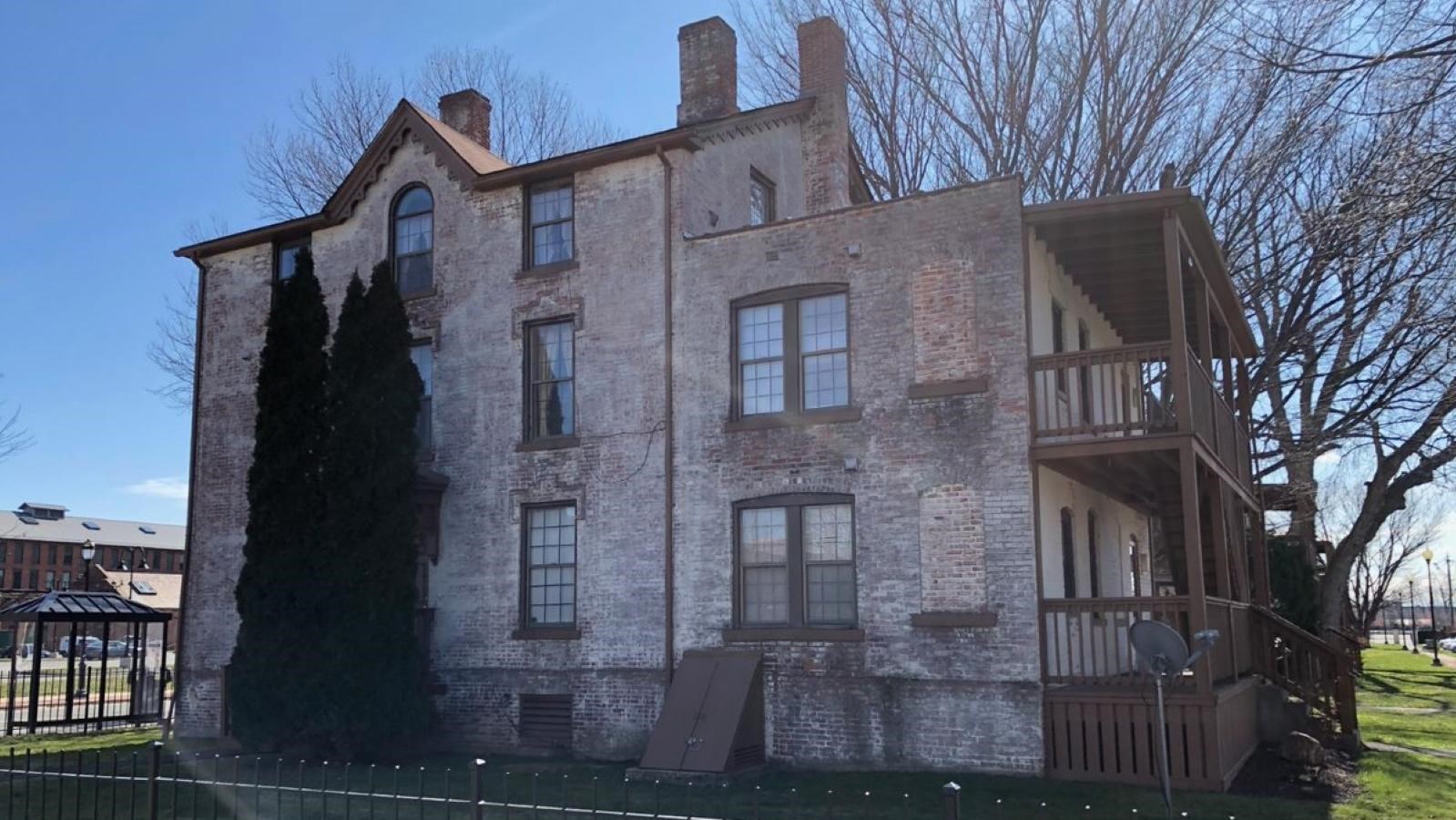Last updated: April 9, 2021
Place
Worker Housing

NPS Digital Photo
Quick Facts
Location:
Hartford, Connecticut
Significance:
Industrialist, Samuel Colt, and his successors pioneered the development of the revolver which had cultural, historical, and geographic impacts on the City of Hartford. Samuel was a paternalistic employer and the Worker Houses were an integral part of his industrial village.
Designation:
The Worker Houses are contributing buildings to the Coltsville Historic District which is registered as a National Historic Landmark District.
OPEN TO PUBLIC:
No
Amenities
2 listed
Cellular Signal, Scenic View/Photo Spot
The Worker Houses, located on Huyshope Avenue and Van Block Avenue, were built in 1856 to provide housing for employees at Colt's Firearms Manufacturing Company.
Samuel Colt believed that by building housing near the factory and providing recreational opportunities he would be able to employee and retain skilled workers for his firearm factory. In the late 1850's Colt would build twenty houses behind the factory that could house up to 145 families.
The worker houses were built in two different styles, Gothic Revival (located on Huyshope Ave) and Italianate (located on Van Block Avenue), meant to attract immigrant workers from Germany and Ireland. The brick Gothic Revival Houses were built to house six families each while the Italianate houses, with their exterior stairwells, could house up to eight families.
To provide a sense of privacy and ownership, trees were planted along the streets and fences were erected. The houses reflected Colt's paternal nature for his employees by ensuring that they had access to fresh air and open spaces for recreation by leaving space between the houses. Aside from providing his workers with a place to live, Colt also built various recreational facilities including a beer hall and Charter Oak Hall. Here workers were able to read books and newspapers, hold gatherings, host exhibits and where the Colt Armory Band gathered.
The houses initially were home to skilled workers including craftsmen, machinists and tool makers, but by the late 1880's they primarily housed unskilled workers.
During World War II, the ten houses closest to the factory, were demolished to build a parking lot for the expanding employee workforce.
In 1976 they were designated apart of the Colt Industrial District in the National Register of Historic Places and in 2008 they became contributing buildings to the Coltsville Historic District which is registered as a National Historic Landmark.
Today, the remaining ten buildings are privately owned condominiums, that reflect the ingenuity of a man who strived to build a workplace that felt like a family. Please be respectful of those who currently reside in these properties.
Samuel Colt believed that by building housing near the factory and providing recreational opportunities he would be able to employee and retain skilled workers for his firearm factory. In the late 1850's Colt would build twenty houses behind the factory that could house up to 145 families.
The worker houses were built in two different styles, Gothic Revival (located on Huyshope Ave) and Italianate (located on Van Block Avenue), meant to attract immigrant workers from Germany and Ireland. The brick Gothic Revival Houses were built to house six families each while the Italianate houses, with their exterior stairwells, could house up to eight families.
To provide a sense of privacy and ownership, trees were planted along the streets and fences were erected. The houses reflected Colt's paternal nature for his employees by ensuring that they had access to fresh air and open spaces for recreation by leaving space between the houses. Aside from providing his workers with a place to live, Colt also built various recreational facilities including a beer hall and Charter Oak Hall. Here workers were able to read books and newspapers, hold gatherings, host exhibits and where the Colt Armory Band gathered.
The houses initially were home to skilled workers including craftsmen, machinists and tool makers, but by the late 1880's they primarily housed unskilled workers.
During World War II, the ten houses closest to the factory, were demolished to build a parking lot for the expanding employee workforce.
In 1976 they were designated apart of the Colt Industrial District in the National Register of Historic Places and in 2008 they became contributing buildings to the Coltsville Historic District which is registered as a National Historic Landmark.
Today, the remaining ten buildings are privately owned condominiums, that reflect the ingenuity of a man who strived to build a workplace that felt like a family. Please be respectful of those who currently reside in these properties.
